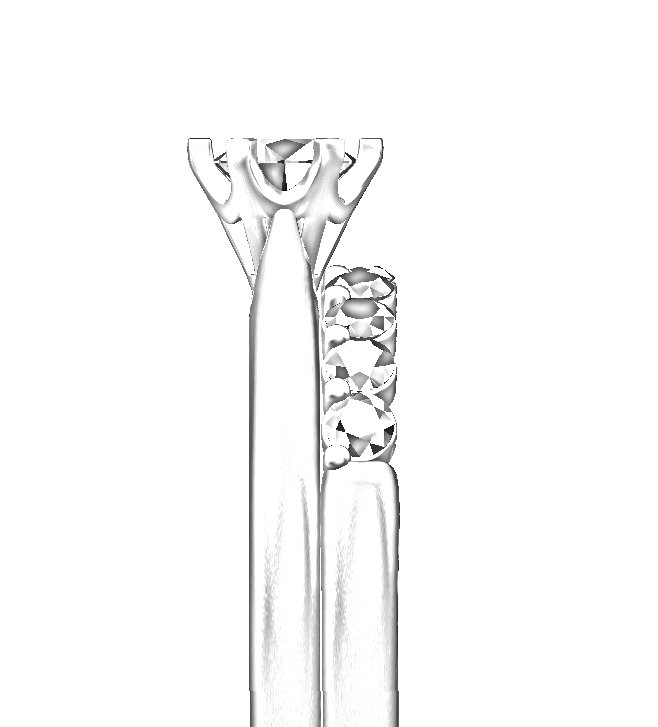Repair or remake
18h November 2022
The restored engagement ring.
Back in September I totally remade/restored this engagement ring and today we will run through the process and why it was chosen to not repair the existing ring.
The ring before restoration.
A six claw solitaire is often far more economical to remake than repair when it gets to end of life. When I say end of life I refer to the main features of the ring having major wear issues:
claws are all worn away
wedding ring has worn a groove into the side of the setting
band is thin at the base and worn on the sides
Repairing these areas can be unsightly even when done really well. The cost to replace 6 claws and re-shank a ring like this is not much less than totally remaking it and gives you a far worse result.
Mockup of the changes.
Above you can see the proposed changes/corrections to the band and setting. At the same time we were remaking the engagement ring we were also making a new eternity ring.
Planning for & designing the eternity ring.
To decide on the design of the eternity ring I took a photo of her existing rings on her hand and edited in various designs and diamond sizes. The one shown above is what she chose.
In the photo on the left above you can see the engagement ring as it was originally designed with the new proposed eternity ring next to it (right side claws omitted intentionally for this graphic). We would make a change to that profile as shown on the right to allow more clearance between the two rings
At the start I mentioned some wear on the side of the setting of the engagement ring from the existing wedding ring rubbing next to it. This would occur more so with the addition of the higher profile eternity ring so the changes to the remade ring would help reduce that wear.
The two ring together as good as new.
Above we have the two finished rings sitting together. The wedding ring was left as is for sentimental reasons.





